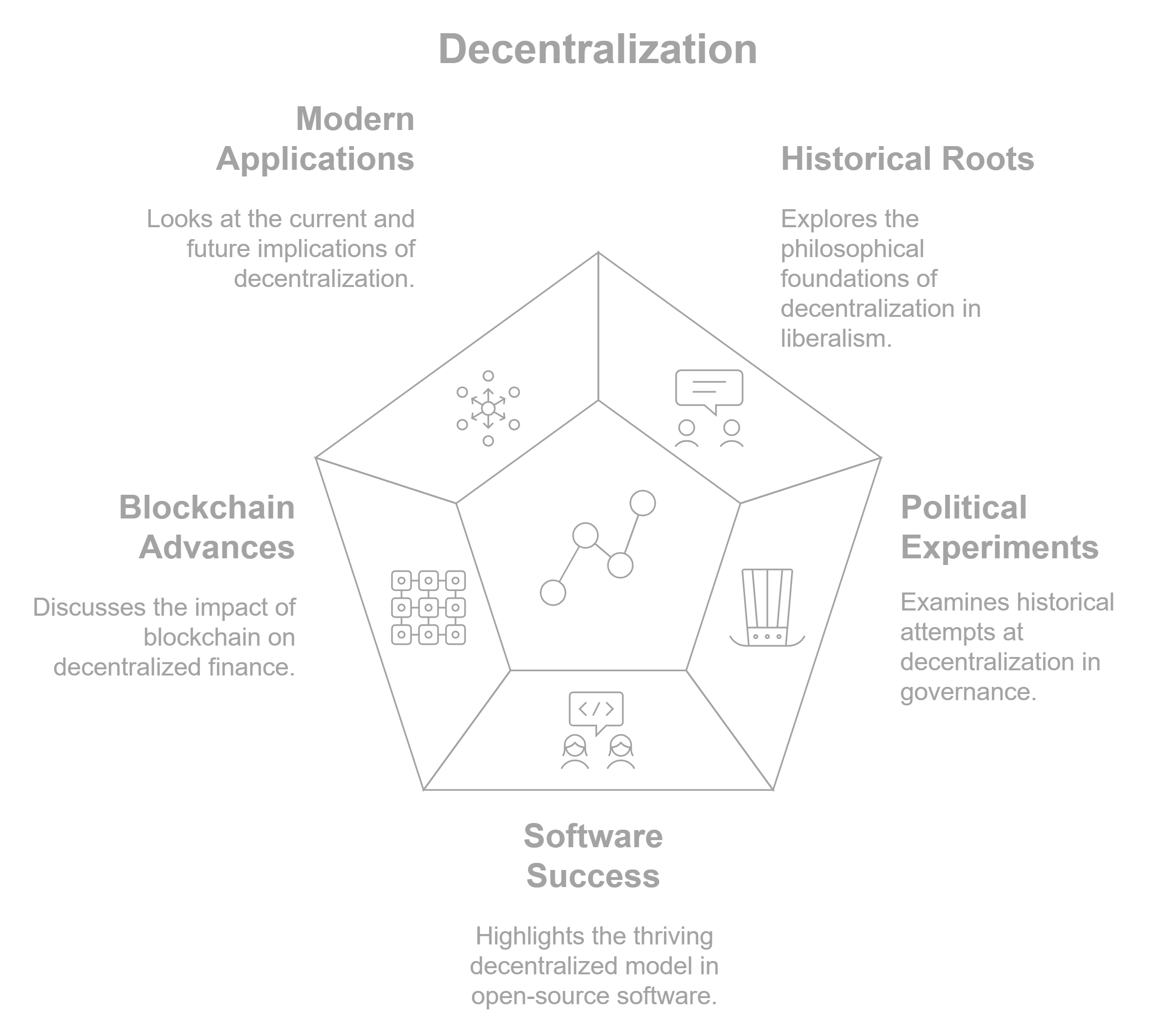
Chapter 2:
Decentralization, New or OldInfographic Summary by AI

Image created by Napkin AI
Historical Roots of Decentralization
Decentralization is far from a novel concept; it stretches back centuries, deeply embedded in the roots of liberalism. This philosophy, which rose to prominence in the Age of Enlightenment, argued for limiting central authority in favor of distributing power and enabling individual freedom. Thinkers like John Locke and Montesquieu advocated for checks and balances to prevent the concentration of power—a foundation for political decentralization. Despite this ideal, attempts to decentralize power often faced significant obstacles.
Political Experiments in Decentralization
In the early years of the United States, the Articles of Confederation created a decentralized government structure in which each state held significant autonomy. However, this arrangement soon showed its limitations, as the central government was too weak to address pressing issues like foreign policy and economic regulation. Similarly, attempts at decentralized governance in the Soviet Union under Gorbachev’s perestroika faced challenges as local authorities gained independence but lacked resources, leading to instability. These examples highlight that while decentralization holds theoretical appeal, practical implementation has often exposed vulnerabilities in political and economic systems.
The Success of Decentralization in Software
In one domain—software—however, decentralization has not only survived but thrived. Open-source software, for instance, has created a collaborative environment where anyone with knowledge can contribute to projects without needing centralized approval. This model was pioneered by projects like Unix in the 1970s and later expanded with the rise of the Linux operating system in the 1990s. Linux quickly became a model of successful decentralization, with developers worldwide working independently on parts of the system. This distributed model transformed Linux into a resilient, adaptable operating system now running a vast portion of the world’s internet infrastructure.
Blockchain and the New Age of Decentralization
With the arrival of blockchain technology, decentralization took another leap forward. Bitcoin, created in 2009, was designed as a financial network independent of any single governing body. Inspired by the failures of centralized banking systems during the 2008 financial crisis, Bitcoin’s decentralized architecture relies on cryptography and consensus mechanisms rather than trust in a central authority. It not only opened up new ways of thinking about money but also introduced a way to handle digital value without intermediaries.
The Strengths of Decentralized Technology
Historical precedents like these demonstrate that, while decentralization has often struggled in political and economic settings, it has proven extraordinarily effective in software and technology. Unlike government structures, decentralized software systems are resilient by design. When one node fails in a blockchain, others keep the system functioning—a feature known as fault tolerance. Decentralized networks are also more resistant to censorship, giving power back to individuals in regions where centralized authorities limit freedom of expression.
The Modern Promise of Decentralization
Decentralization today is reshaping industries beyond finance and technology, showing that while it may have stumbled in its political aspirations, it is redefining how we interact with and build systems in the digital age. Where liberalism and decentralization once aimed to protect individual rights from oppressive power, decentralization in software and blockchain now offers individuals new avenues of participation and control. It is here, in this renewed form, that decentralization is finally realizing its promise, resiliently standing apart from past struggles.